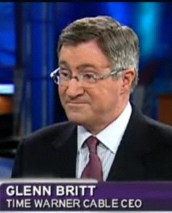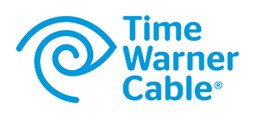Despite the loss of more than 128,000 video subscribers, Time Warner Cable more than made up the difference with rate increases on equipment, programming, and broadband to score a 23 percent increase in earnings in the second quarter of 2011. For the period of April-June, Time Warner earned a profit of $420 million, nearly $80 million more than the same quarter last year.
Cable Television
Time Warner CEO Glenn Britt continued to blame the loss of video subscribers on the housing crisis and economy, suggesting the cable operator’s prices have gotten too high for some customers to handle, and they’ve disconnected cable television service as a result. Britt also continues to downplay the impact of online video allowing for consumer cord-cutting, suggesting instead that increased competition from phone companies and satellite providers are creating a problem online video isn’t.
As a result, Time Warner is refocusing its efforts on marketing packages to three segments it particularly wants to attract — the very well-to-do, the Latino community, and the income-challenged.
Time Warner officials noted that many of their customers have continued to pare back their packages to cushion against the company’s rate increases. For the last few years, consumers have cut premium movie channels and extra tier add-ons. Now customers are targeting Time Warner’s DVR service as a route to a lower cable bill. Many are returning their DVR boxes to save money, or are not keeping the service as a promotion expires. Time Warner often bundles DVR service into new customer promotions for no additional charge.
For these income-challenged consumers, Time Warner is promising to develop new packages of services at reduced prices. That likely means the expansion of the company’s “budget tier” — a package of selected basic cable networks, excluding expensive sports programming, currently testing in two markets for around $50 a month.
But the company is also reporting success with its wealthier customers, many who are adopting Time Warner’s super premium Signature Home service, from which the company collects an average of $220 per month per customer. Time Warner is also ramping up promotion of its cable services to Spanish-speaking audiences in the Latino community — customers it may have under-served in the past.
The company also reported declines in video-on-demand revenue, principally adult pornography pay-per-view content consumers are now watching on the Internet for free.
Broadband
 Among the brightest stars for Time Warner Cable continues to be broadband service, which is increasingly important… and profitable for the nation’s second largest cable operator. With “pricing strength,” Time Warner has successfully adopted a series of rate increases for Road Runner service, increasing revenues along the way. The company also reports success with its DOCSIS 3 rollouts, now reaching 60 percent of its cable subscribers. CEO Britt says the cable company expects to complete DOCSIS 3 upgrades nationwide by the end of 2012. A noticeable percentage of customers are upgrading to premium-priced, faster speed tiers as a result.
Among the brightest stars for Time Warner Cable continues to be broadband service, which is increasingly important… and profitable for the nation’s second largest cable operator. With “pricing strength,” Time Warner has successfully adopted a series of rate increases for Road Runner service, increasing revenues along the way. The company also reports success with its DOCSIS 3 rollouts, now reaching 60 percent of its cable subscribers. CEO Britt says the cable company expects to complete DOCSIS 3 upgrades nationwide by the end of 2012. A noticeable percentage of customers are upgrading to premium-priced, faster speed tiers as a result.
Despite the investment in DOCSIS 3, Time Warner Cable continues to slash the amount of capital it is investing in its network. So far this year, capital expenditures are down 7.4 percent to $1.36 billion. Chief Operating Officer Rob Marcus predicts Time Warner will spend no more than $3 billion on its systems in 2011, despite plans to continue broadband upgrades and convert their cable systems to all-digital operations. So far this year, Time Warner has earned over $2.2 billion from its broadband division alone, up 9 percent from last year. The company attributes most of that growth to rate increases and customers upgrading their service.
Other facts:
- Time Warner’s wireless mobile broadband has failed to spark much interest from consumers, perhaps because they realize it comes from Clearwire, a company Time Warner CEO Glenn Britt seemed unimpressed with in today’s conference call. He made a point of telling investors the cable company is under no obligation to invest anything else in the venture;
- Time Warner Cable is taking a new interest in Wi-Fi, deploying networks in New York and Los Angeles, in the hope the company can boost interest in a “quad-play” of cable, phone, Internet, and wireless broadband/Wi-Fi that consumers have taken a pass on thus far;
- The company’s new super data center in Charlotte, N.C., will provide a national “head-end” for IPTV video, currently supplied from a facility in Denver. This will principally benefit iPad users using the company’s app to stream online video. The company hopes to eliminate regional and local distribution efforts as a cost-savings measure, consolidating national distribution through Colorado and North Carolina;
- The company’s next version of TWCable TV — the aforementioned iPad app, is due out in a few weeks and will include text searching for individual shows. Whether it corrects the ludicrous inability for the app to consistently stream video is another question;
- Competition for new customers has been responsible for a number of disconnects. One satellite provider is pitching Time Warner customers on a $30 a month video package that includes the NFL Sunday Ticket for free. Verizon FiOS has increased its marketing of Time Warner customers, offering its own triple-play package for $99 a month. AT&T U-verse has their own triple play packages as low as $89 a month, with a substantial mail-in rebate offer good for over $100. But Britt warns the lack of change in the “average revenue per subscriber”-numbers from competitors probably means consumers are paying substantially more thanks to fine print-surcharges and fees;
- Time Warner is still trying to sign agreements for its TV Everywhere project, particularly for HBO Go, but the terms are evidently still not acceptable to the cable company.
Our earlier coverage, seen below, covers Britt’s remarkable comments about usage-based pricing. He was certainly off the usual industry playbook today, even going as far as telling investors what we knew all along: bandwidth costs bear almost no relationship to the prices charged for broadband service. That’s one we’ll tuck away and remember.
Time Warner Cable CEO Glenn Britt highlights the results from the second quarter, covering cable-TV, broadband, and other products. July 28, 2011. (6 minutes)
You must remain on this page to hear the clip, or you can download the clip and listen later.


 Subscribe
Subscribe
